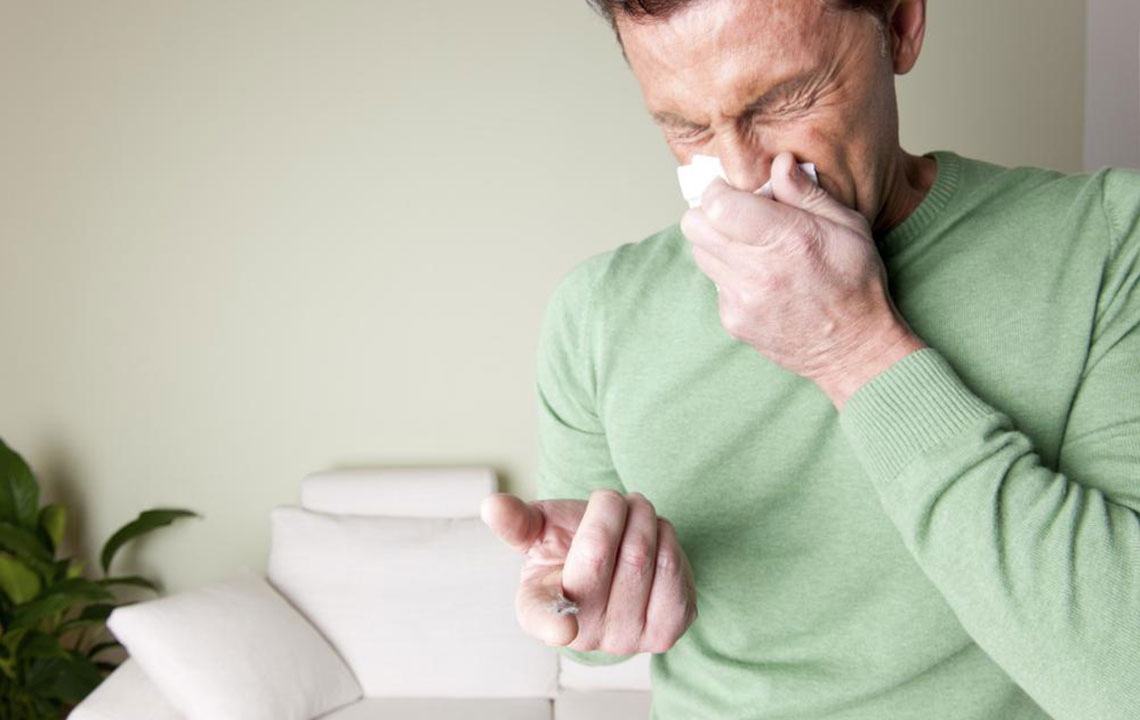Few Common Causes, Symptoms, and Effective Medicines for Mold Allergy

Mold is always present in our surroundings. From your home to the streets, these molds are present everywhere you go. Brown-gray in color, this is a type of fungus that can grow in the cabinet under your kitchen sink, in a field of uncut grass, on the tiles of your bathroom and can go undetected for long. Most species of molds are not visible to the naked eye as they are extremely tiny. These tiny molds then go on to become airborne.
Molds require oxygen to grow in a specific area. They feed on the warmth and thus, they are likely to grow in spaces that have a high or humid temperature. They also thrive in darkness and moisture. When there is water or any type of liquid that is left untouched for long, mold begins to grow and usually, it is the moisture in the surroundings that gives rise to the growth of molds. Thus, it is no surprise that these species of fungus go on to multiply in humid conditions.
When an individual suffers from mold allergy, it is because the immune system cannot withstand the inhalation upon breathing the pores. It causes the eyes to water, difficulty in breathing, and several other symptoms that are worse, especially if one suffers from asthma or breathing conditions. To find a cure and mold allergy medicines, one needs to know the causes and symptoms of mold allergy. There are several causes of mold allergy and here are the most common causes:
Weak immune system – A weak immune system is overly sensitive and reacts quickly. Thus, if one inhales any kind of airborne mold spores, the body detects them and prepares to fight them.
Certain types of molds – The body is not allergic to every type of mold. It is only a few kinds of molds that trigger a reaction in the form of watery eyes and sneezing.
Molds might seem like a fungus that one can get rid of; however, there are instances where people have caught allergies from them. This is usually an abnormal allergy people get from molds or mold spores. People catch the allergy when the mold’s small pollen grains escape the filtering process of the nose and get ingested into the respiratory system.
The common symptoms of mold allergy include:
– Running or blocked nose
– Sneezing
– Cough
– Post nasal drip
– Itchy eyes
– Itchy nose
– Itchy throat
– Watery eyes
– Dry skin
– Scaly skin
Mold allergy medicines can help reduce the occurrence of an allergy and stop it over time. You can take decongestant drugs to treat your mold allergies and these work as excellent mold allergy medicines. Also, mold allergy medicines come in the form of nasal sprays like oxymetazoline and pseudoephedrine. Antihistamines can also be used for mold allergy medication and treatment. Moreover, these medicines can control the effects of the symptoms. Here are some mold allergy medicines that will help treat the condition:
Nasal sprays – This is a form of mold allergy medicine that helps treat and also prevent further allergic reactions that are caused by mold. Most people find nasal corticosteroids to be a very effective medication that brings about good results. Some of the types of nasal spray mold allergy medicines include fluticasone and budesonide.
Oral decongestant pills – As the name suggests, oral decongestants have to be consumed in the form of pills. There are several types of oral decongestants and these include the popular Drixoral and more. However, oral pills are found to have several side-effects and may not go down too well with people who suffer from other illnesses. Some of the side-effects that accompany popping decongestants include quick heart pounding and loss of appetite. Moreover, people with high blood pressure should stay away from these as they can be fatal.
Antihistamine drugs – Antihistamine drugs are good to use when treating mold allergies that are seasonal. These are great especially when one suffers from severe symptoms such as watering eyes, issues with breathing, and severe itching. Usually, these drugs are effective when combined decongestant medicines. However, this combination does cause extensive drowsiness and do come with their own set of effects. There are decongestant combination mold allergy medicines as well and they work extremely well.
The above-mentioned medicines are prescription-only medicine; you can go for non-prescription medications based on the level of allergy you have. Also, do note that one should only take a mold allergy medicine after consulting a physician. While medicines for mold allergy do work, you should stay away from the places that you catch the allergy from. The best way to treat the condition is to stay away from the allergens. Make sure that your home is well-ventilated and if you come across molds, do not touch them. It is essential to take necessary preventions to make allergy go faster.


